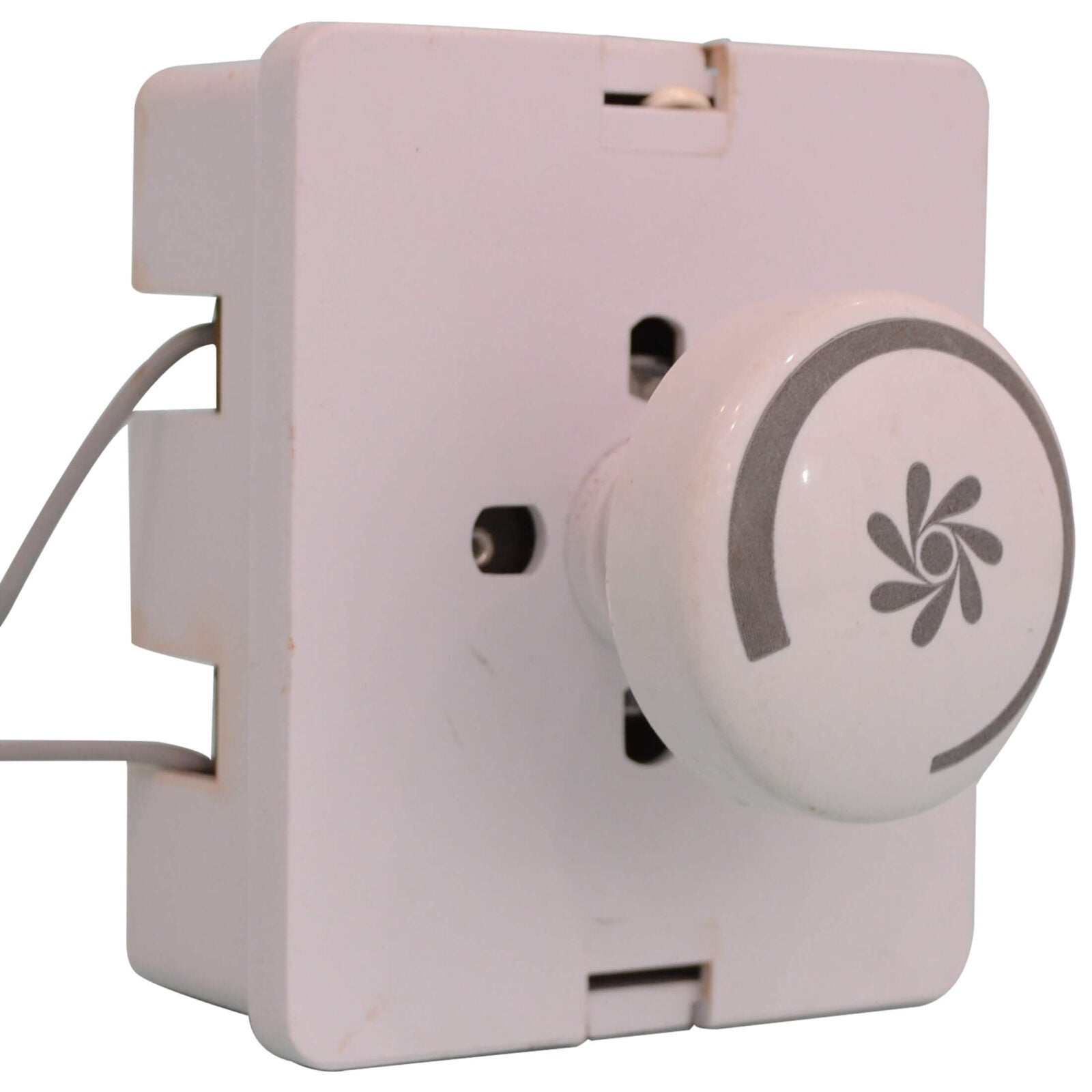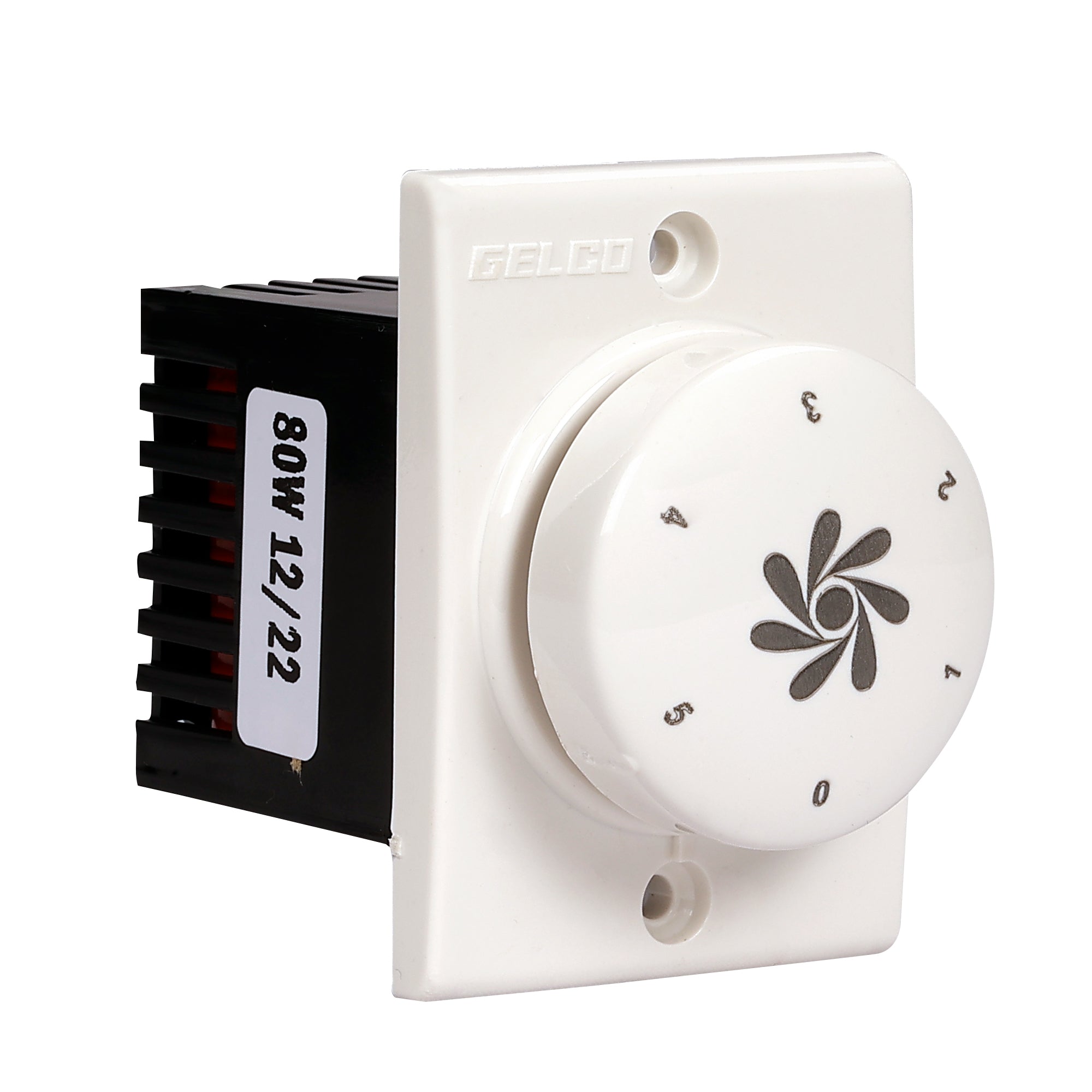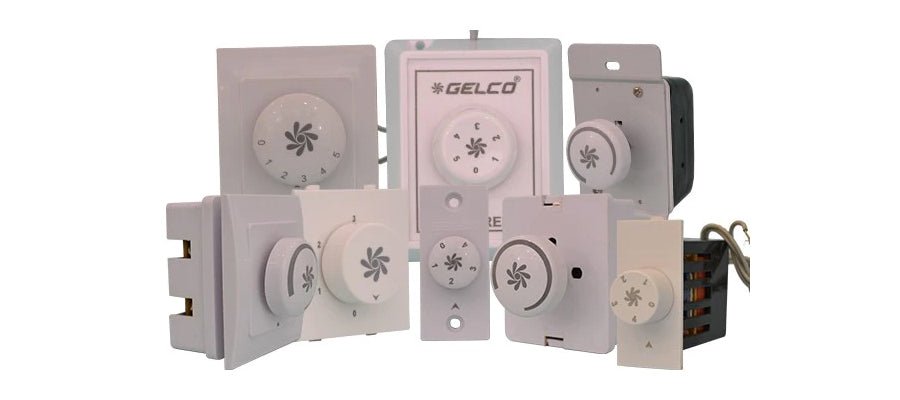Fan Regulators or Remote-Controlled Ceiling Fans - Pros & Cons
The fan regulator is a circular knob on the switchboard used to regulate or control the speed of a ceiling fan. However, the latest technology has regulator-less ceiling fans to offer. With the help of an automated system, these are controlled using a remote control. With the tap of a button, you can easily control your ceiling fans. But which is an ideal option for your requirement? Let's discuss the two in detail to give you a better understanding in order to help you make the right decision.
Fan Regulators - Pros & Cons:
The function of the fan regulator is very simple i.e. to modify the voltage before it reaches the fan. The benefits of installing a regulator in your home are:
- Compact Size & Aesthetics: They come in small sizes, occupying very little space on the switchboard. Their compact size makes them a desirable option. Also, they come in various sizes and colours, making them aesthetically desirable according to one’s personal choice.
- Power Efficient: They help regulate the speed of the fan and hence, help in saving power. Slower the speed of the fan, the lesser power it uses. Regulating the speed helps in save excess use of power and also acts as cost-effective.
- Speed Control: As discussed in the last point, it helps regulate the speed of the fan. According to one’s comfort, one can set the speed of the fan using a simple regulator.
- Functionality: The regulators are an ideal option when it comes to bulk installations like public places, industries and organizations. In large areas with numerous fans, it might be difficult to manage so many remotes and often might lead to misplacing the remotes. It is better to have regulators installed on the wall, a convenient option.
On the contrary, the fan regulators are installed on a wall which requires manual intervention. One needs to walk towards the regulator again and again in order to control the speed of the fan. This can be quite inconvenient as it requires you to step out of your comfort or might be disruptive at times.
Remote Controlled Ceiling Fans - Pros & Cons:
The same is the function of a remote-controlled ceiling fan, only the difference is that instead of a regulator, one uses a remote control to regulate the speed of the fan.
The biggest advantage of a remote-controlled fan is convenience. One can increase or decrease the speed of the fan in the comfort of their space. It doesn’t require one to move to the regulator rather one can alter the speed from wherever they are, using a remote control. However, the advantage comes with the biggest disadvantage that the remote control is portable which also increases the risk of misplacing or breaking the remote. Also, mostly these remotes are battery-operated which is an additional cost. Also, these systems are comparatively costlier than a regular fan and come with extra maintenance charges. Putting aside all the pros and cons, they are aesthetically more appealing and considered more stylish in modern terms.
Well! Now it is up to you to decide if you prefer style and comfort or wish to keep it simple and act cost-effective. Gelco Electronics always aims at providing you the best insights to help you make a wise decision.

FD-415W
Buy Now
Suprimo Miny 80W
Buy Now















